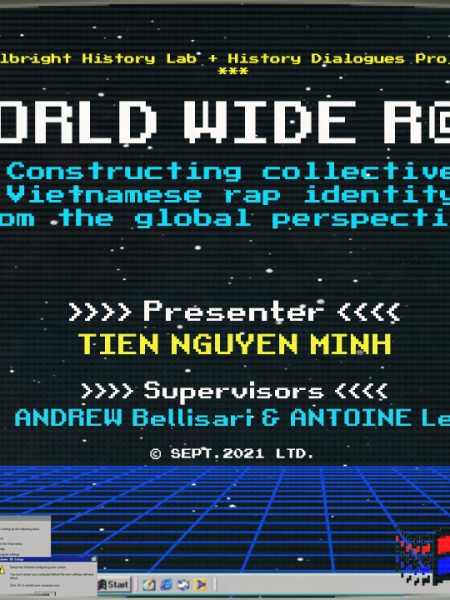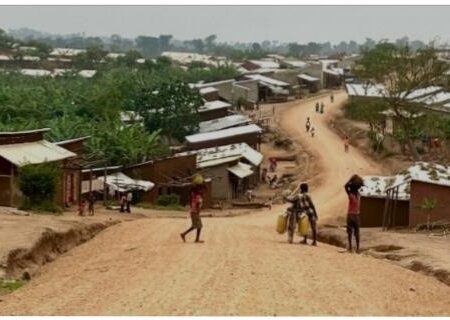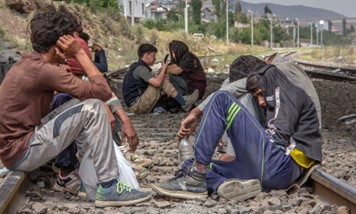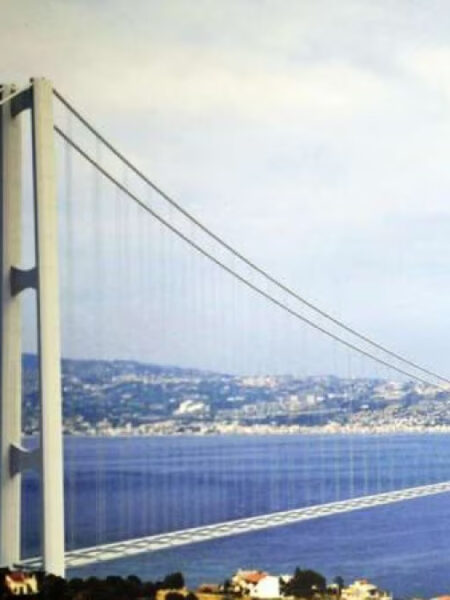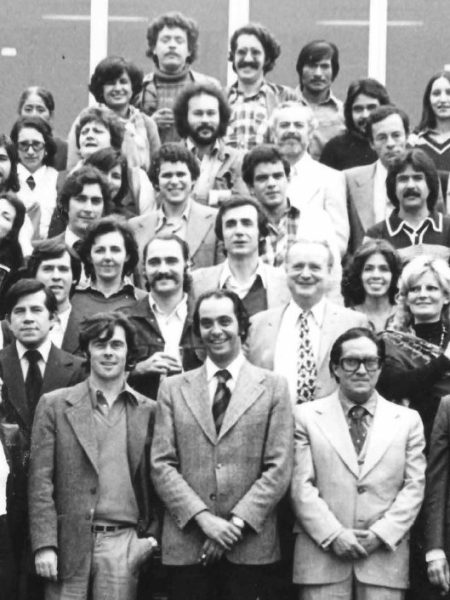INTRODUCTION
There is a high risk of oversimplifying a complex phenomenon like migration[1] and falling short in our analysis of important details due to our own lack of interest, prejudice, and misinformation when dealing with it. For this reason, it is important to take a look at concrete numbers in many cases to at least get a more accurate representation of the magnitude migration has around the world. When taking a look at the IOM World Migration Report it comes as no surprise to see Europe as the leading continent when it comes to Total International Migrant percentile with a total of 86.7 M migrants approximately and that’s only from the last report in 2022.[2] Europe has gained a reputation for being a prosperous and relatively safe destination for many of those escaping violent, unstable, and economically unsustainable realities in their home countries. While perhaps not the leading destination country, Italy still holds a relatively large percentage of the total number of international migrants coming into Europe having 6.39 M living within its borders.[3] Among these international migrants a small percentage, at least inside of Italy, come from the Americas and in particular from the Central American and Caribbean region. Of this small percentage, one relatively small group was of particular interest, that of Salvadoran migrants inside Italy and especially their individual stories.
But while the numbers are certainly helpful at contextualizing the concrete phenomena, they tend to dehumanize and once again we risk falling into the mistakes mentioned prior. Among the various studies humans have put their time into, migration might be one of the most complex. Migration is a rather expansive area of study, as most studies have become in this globalized day and age, and to fully immerse oneself into it one can’t approach it if not through the means of an interdisciplinary methodology. This basically entails, among the many definitions of interdisciplinary, that there isn’t a right way to approach the analysis of this research- No, better. There is no single approach that can be considered ultimately better or attributed with all the importance when it comes down to analyzing migratory diasporas. For this reason, I decided to embark on my research through oral history. As it deals with the intrinsic human factor that is absent in purely statistical analysis of migration and even more when it comes to the Salvadoran case in Italy. Salvadoran migration to Italy is a particularly interesting phenomena for a couple of reasons. Definitely the personal factor plays a big role, since I was born in Italy but raised in El Salvador for 18 years the topic on Salvadoran migration always struck close to home. In a way it felt like I owed it to my origins to dedicate this kind of research project to such an obscure and oftentimes ignored topic related to El Salvador. Not only this but Salvadoran migration in Academia is always put into perspective within Northern Migration towards the United States, which is to be expected seeing as how it’s without a doubt the most relevant and lively of all the Salvadoran diasporas outside of El Salvador. Which means that many stories and movements going elsewhere have been partially studied or outright ignored in their totality, forgetting that migration is not just a number you can throw around in statistics but also one with individual stories that deserve as much recognition to see the light of day as mainstream narratives like the aforementioned Northern Migration. So, in the case of Salvadoran migration towards Italy, what made it the prime destination for some over a more common pick like the United States? Well, again, the answer is not a singular one. And as will be seen later on, a main factor that has influenced the decision is the vast amounts of new and fresh opportunities presented to the migrants, opportunities that, unlike those in other regions, are safer.
The curious thing about Salvadoran migration towards Italy is that at the root of its existence we have an initial Italian movement towards El Salvador rather than the other way around. Italian presence in El Salvador was so influential that nation-building symbols such as the two National Anthems were composed by Italians and influenced day to day life being one of the biggest European communities in the country. Some of which came to El Salvador even before the unification of Italy itself.[4] this to show how the relation between these two countries is not one based on random occurrence but rather one based on intertwined histories that influenced and inevitably brought into existence a two-way road of migration that to this day is still growing. But at the core of this research project lies an interest for the individual stories of failure, success, and especially perseverance of the ever-growing Salvadoran community in Italy, especially in the metropolitan areas of the country such as Milan and Rome. A community that grew from literally nothing, pushed by political and social factors surrounding a war-stricken country like El Salvador in the 80s, but that for one reason or another decided to stay and develop a new life in Italy rather than going back to their homeland. A story that has been overshadowed by the massive stories of northern migration but that deserve to have a voice as much as any other. A story of cultural preservation, even through all the difficulties and the shock of entering a different society and cultural reality from the one encountered back home, and how this reflects on the new generations of Salvadorans living in Italy.
Individual stories come with a caveat: no two people will have the same identical experience. At surface level the people interviewed all have the same migration story, all are Salvadorans that came to Italy in the 21st century. But their similarities end there. While Adriana, Jose, and Luis all share a nationality and a destination each one is so individually diverse in their stories that reducing their experience to generalities would be a detriment to any study. So, throughout this paper it is important to keep in mind the research question that gave the theoretical foundations and directed the inquiry of the interviews. The research, while brief, attempts to understand a complex question: what were the motivations and push factors that brought, and still bring forth, this influx of Salvadoran migrants towards Italy in the 21st century and how this community integrated and adapted to the new socio-cultural reality that dawned upon them? A question that does not have a single all-encompassing answer, as we will see, and that each individual can contribute to in their own eye-opening manner.
PART I – HISTORICAL CONTEXT
El Salvador has always been a cradle for large groups of peoples, especially due to its central location in the Central American isthmus. This means that, throughout its history, migration has always been at the center of its demographics and plays a major role in defining its identity.[5] European presence is not particularly surprising in El Salvador’s history either, seeing as how it was colonized by the Spanish conquistador Pedro de Alvarado starting in 1522 and officially forming a colony by 1525.[6] And being in such a strategic economical location it results in great influxes of people from all over the world. Now, as pointed out in the introduction of this paper, Salvadoran relations with Italy and migration has a very particular origin. One might be led to believe that the migratory relations between Italy and El Salvador originated from the Salvadoran movement towards the European nation but this couldn’t be farther from the truth. In fact, historical studies and statistical analysis of immigrants entering El Salvador show that it was the Italians to first initiate this relation of movement back in the 19th century and progressively increasing during the early 20th century. It is key to point out that at the time of the first Italians entering the country Italy was not even considered a nation-state, but any information prior to 1881-1882 must be analyzed with scrutiny since these were the years in which: 1. The first Salvadoran Central Office of Statistics was founded. And 2. The first General Census of Population was made.[7] All of this reaching its peak in the early 20th century when the biggest groups of Italians moved to El Salvador escaping the situation in Europe. During this period, we see the arrival of families that would later form part of Salvadoran society, influencing various aspects of it such as cuisine, architecture, the arts, etc.[8] Another major demographic that came during these migratory booms were the religious entities. We have the presence of Salesians and Franciscans coming to El Salvador bringing their teachings on faith establishing churches and convents, but not only, these orders brought with them schools and education systems that integrated into Salvadoran society smoothly thanks to its already conservative and religious nature. All of this initial context helps understand the foundations of future Salvadoran movement towards Italy, movement that is oftentimes influenced by initial connections to the Italian community in El Salvador especially when it comes to the job the religious groups had (and still have) in facilitating the process for Salvadoran families in a way.
Then again, this study is not about Italian migration towards El Salvador though. And as important as this initial relation might have been it is important to understand the main motivations that brought about the Salvadoran movement towards the rest of the world and especially towards Italy. This proves itself to be a particularly important job when the magnitude of the phenomenon becomes clear, as more than 1,559,924 Salvadorans were classified as migrants by the UN by 2019 which means that this number is way higher by 2023.[9] While difficult to calculate exactly when the first Salvadorans began to move internationally, and especially difficult when it comes to the Italian statistic, there are a couple of articles and books that discuss a migratory wave leaving El Salvador around the beginning of the 60s and 70s seeking better job opportunities to help their families still residing in El Salvador. A movement that would progressively increase in numbers as we approached the last decades of the 20th century and would culminate with the beginning of the Salvadoran Civil War. A war that perhaps Salvadoran in essence, played a bigger significance in the wider “ideological” war between the United States of America and the USSR, with the military and the insurgency receiving direct support from their respective quote on quote ‘Big Brother’ in multiple occasions. During said period, international migration boomed and shaped the Salvadoran presence outside of the country for years to come.[10] Now, books that go into migration trends in Latin America such as the book by Mario Lungo, Kay Eekhoff, and Sonia Baires “Migracion y Fronteras” (1998) were essential to understanding the Salvadoran case and some of the trends mentioned above. The book achieves this by presenting a case study of an entire area of the country, Santa Elena, and describes the evolution it went through.[11] An evolution that was not only characteristic of Santa Elena but of an entire nation. And as we will see in both of the interviews, as we enter the 21st century motivations for emigrating change and evolve once again, standing on the shoulders of those that came before and that established themselves in Italy long before the 2000s. An emigration fueled by some of the initial desire for a better life and better opportunities, but that evolves and develops into one of community building and especially into one seeking a better future for those living in El Salvador rather than simply looking for an escape from its reality.
PART II – PUSH AND PULL FACTORS
Understanding Salvadoran migration is a very complex task to partake in. The multiplicity of factors always needs to be emphasized, not only in the Salvadoran case but in general when it comes to migration theory. From push factors like violence and lack of opportunity to pull factors like better standards of living and secure futures, migration has represented (and still represents) a sort of solution to many of the issues that dawn upon Salvadoran society and its citizens. Despite the large numbers of migrants, one of the biggest roadblocks encountered during the research was the lack of information regarding Salvadorans moving to Italy. This is due in large part to an overconcentration of studies regarding Northern Migration of Salvadorans. In fact, in most of the cases the main destination happens to be the United States, a trend shared by a great portion of Central American nations, and this is especially true for the younger generations of Salvadorans that still hold the belief of the so-called American Dream according to Juan Pablo Perez Sainz, an expert on the Sociological Studies of Latin America.[12] But while migration towards the US is the most numerous of all when it comes to number of Salvadorans partaking in it, there is a portion of the population that refuse this destination entirely either because they’ve had different opportunities or have been completely disenchanted from this migratory myth by cause of experience.
Among those that refused the so-called ‘American Dream’ in search for a dream of their own we have the couple behind ‘Pulgarcito’, one of the most famous Salvadoran restaurants in Italy located in one of the most lively and fascinating urban areas of Rome. In little over a year of hard work and dedication, Jennifer Adriana Lopez de Leon and Jose Carlos de Leon have created and maintained a successful business in the heart of Italy, something many dream to accomplish, a story that they recognize to be one of great luck and providence. Both of them have been in Rome for a couple of years, with Jose Carlos being the first to leave El Salvador back in 2016 coming to Italy with the safety of his family that had already established itself in Rome, almost 20 years prior to his arrival. Jose Carlos was quick to point out the reason why he didn’t stay in El Salvador for me and presented the first real motivator when I asked “What made you decide to leave El Salvador?”: “In my case, I studied at a culinary school in El Salvador and when my family offered me a job here in Italy I couldn’t refuse; El Salvador not only has expensive rent prices for young couples, but in addition cooks are very underpaid even if they have finished culinary school”.[13] This, in addition to his family being here already made the decision to move one that required almost no thought given the economic and social situation in the country. Now, as soon as I asked Adriana the same question she mentioned this aspect of the ‘American Dream’ giving another reason that hadn’t crossed my mind when it came to deciding where to go, Adriana stated that “While most people decide to go to the United States, for me Italy was the safer option since Jose was already here, and also in great part because leaving to the United States meant I had to go there illegally and going anywhere without any reassurance that you stay was not something I wanted to do”.[14] Adriana’s comment, while seemingly trivial, showcases one of the most attractive factors about migrating towards Italy for many Salvadorans. It’s a thing Adriana mentions once again later in the interview, she says that Italy gives sort of a “free way”[15] when it comes to immigration, requiring no extra controls at the airport arrival and making the whole process much easier once the person enters the country. Italy represents for many Salvadorans a land of opportunity that comes with less risks than the ones encountered in Northern Migration, which is characterized by the uncertainty of entering the country safely due to the “coyotes” corrupt ways and the dangers the whole journey by land represent.[16]
But it is important to understand as well that each generation is motivated by different factors, even a decade of difference is enough to completely alter the push and pull factors of migration. This is the case for Luis Orellana, a Salvadoran in his early twenties that moved to Italy to pursue a career in music at the “S. Cecilia Conservatory” in Rome, one of the most prestigious and important music schools in the entire city. Luis, whom is in his early 20s, while experiencing the same movement as Adriana and Jose, late 20s/early 30s, has a different set of motivators that brought him to Italy starting off with the main one that sets him apart (and many more Salvadorans his age): the search for an education that is unavailable in El Salvador. Luis was quick to point out this exact motivation when answering the question, I previously asked Adriana and Jose, “Unfortunately there isn’t an institution, school, or conservatory in El Salvador that can award you with a certification that says you are a violinist like there is in Italy.”[17] this, he says, “made me decide to leave the country, it is probably the main reason. But Italy was not my first option, I actually attempted to enter a music faculty in Mexico several times without any avail.”[18] Making this distinction between both stories is important, his first option was not Italy and we see how the Northern Migration dream fails once again at giving a Salvadoran what they hoped for. But it is also through this failure that Luis found what might be one of the most important pull factors to exist for many of those emigrating towards Italy. He goes on to say the following, “It was until 2020 that things changed, thanks to the help of an association that I had worked with for a couple of years. They mentioned the opening of a student center in Rome and offered to help me study what I wanted to by giving me a scholarship”[19] but what truly struck me was what this meant for him, something more than just money and a free tuition, “not only was I attracted by the chance to study what I wanted, but that I was in good hands. I had good people that supported me once I got here and that guided me through the whole thing, it was a proposal bigger than just a scholarship, it was an opportunity given to me not based on merit but as a gift”.[20]
We could say each one of these stories showcase the factors that put into motion that initial movement from El Salvador to Italy for all three of the interviewees. But once that initial “wall” is surpassed, a huge hurdle presents itself into the collective story that Adriana, Jose, and Luis share, that of integration into a new society.
PART III – INTEGRATION
As mentioned previously, this is not a simple and smooth process. Difficulties integrating into a totally new context and other challenges are common among those migrating. This is especially true when the context of the destination country, in this case Italy, is particularly different from the country of origin, El Salvador. What is interesting to note is that despite the privileged situation both groups of interviewees recognized to be a part of, they still experienced some obstacles along their pathways. When asking Luis directly if he had experienced any particular issues when coming to Italy his response was very sincere, “I had the fortune of having this association supporting me through the whole process (referring to the bureaucratic aspect of his immigration process) so I never encountered any substantial issues, my papers were always there when I needed them, all the necessary documents were in check, and any issues would be resolved very fast. But, I’d say that if not for the bureaucratic side of things, perhaps the only true issue came with the culture shock that moving implied. One thing is coming to Italy as a tourist and another thing is coming to live here”[21] a common issue encountered by a large portion of newly arrived Salvadorans as well, this culture shock is not only due to the language (although it is definitely a major factor) but it’s also how different life is compared to life in El Salvador, especially with traditions, cuisine, ways of relating with other, etc. all factors that to someone that has never immigrated might seem trivial but that in reality are what form the identity of a lot of people and for that same reason it can be quite tricky to deal with, there’s a risk of consciously forgetting one’s origins in hopes of integrating faster or “correctly”.
Unfortunately, some were not so lucky when dealing with the bureaucracy as I was told by Jose. When I asked if he had noticed any particular improvements with the whole process for the newer generations Jose was quick to point out how much it has changed for good. He expressed a bittersweet feeling recalling that he had to, and I quote, “…go to the police precinct at around 3am and leave at around 3pm, in some cases the appointments I got weren’t even real appointments but appointments to set an appointment”[22] a process that went on like this for more than 2 years. Despite this, Adriana and Jose both rejoiced when they mentioned how much this had changed for people coming from El Salvador and other areas of Latin America, especially when they saw customers that had been coming to the restaurant for a long time finally be able to bring their entire families to Italy.
Both groups mentioned in the interviews that the idea of community particularly resonated with them. A community that went beyond the superficial nominatives like “Salvadoran Community” or even beyond the “Latin Community” both groups talked about a much wider community, a sort of “Human Community” per say. One that instead of making distinctions between race and origin to form divisions, preferred to focus on what truly mattered and that was the real human connections that truly make up a community. I think the ‘Pulgarcito’ couple put it best: “What makes a place like ‘Pulgarcito’ attractive is not the food, but the people that come here to share with us their lives for a little while. People have come before trying to mess around with us, saying that our restaurant is not luxurious or similar stuff, but we always reply back that it is indeed luxurious, the luxury we have are the people that come here every single day.”[23]
CONCLUSION
By now it may be clear why the initial disclaimer about the lack of a single answer was so important to be able to delve into the research itself. Salvadoran migration towards Italy might not be the first coming to mind when it comes to the countries’ migratory flux, much less when it comes to Latino migration in general, but it is this exact trait that makes it such an important research topic as it is able to show what the other options lack. Migration tends to be reduced to raw statistics and pure data, that while definitely useful in terms of demographic calculations and economic analysis lack the quintessential factor that makes up its entire core, the human factor. We can’t diagnose a sociological phenomenon by replacing people with numbers, and research projects of oral history like these seek to bypass this exact issue found in migration studies. While obviously the stories of Adriana, Jose, and Luis do not define the narrative of every single Salvadoran living in Italy, they do describe their own personal and human experience. And such a small group of narratives holds more value than thousands of statistical papers that erase the human faces of the people being analyzed even when each one of their stories is different. To circle back to the introduction of this paper: there is no all-encompassing answer to every single problematic regarding Salvadoran migration to Italy, and trying to find one is a grave mistake as the beauty of this phenomenon is exactly this multifaceted narrative that each individual experienced.
Now, we have seen time and time again how each actor saw the reality of their own migration experience differently, but from the young entrepreneurship of the ‘Pulgarcito’ restaurant to the aspiring violinist there is one characteristic that unites each and every single one of these stories: hope. While perhaps it may sound cliché at first, there is no better way to describe this unifying factor than this charged word. No other word can describe the dream of community building that Adriana and Jose have with their little but hugely important restaurant. No other word can come close to expressing the future Luis envisions for himself, one in which he goes back to El Salvador to open a school that can give people the opportunity to study and follow the dreams he so desperately chased after back in 2020. No other word can describe the individual stories of Salvadoran migrants all over the world, each one having at the core of it this one factor that prevails even through the longest of oddyseys. Showcasing the shared desire of entrepreneurship and initiative all of them have. One that proves that, unlike what is believed by those against migration, these movements aren’t just a brain drain for countries like El Salvador, but rather a long-term investment for the betterment of these “sending” societies. Societies that can only benefit from these people leaving, as those that leave will either come back to improve the situation back home or stay abroad and serve as anchors for those that leave, keeping their culture and traditions intact and alive throughout the process of migration, just like the ‘Pulgarcito’ owners have done. Through all the inequality, violence, uncertainty, and despite the weight of history Salvadorans remain people of great determination, people of great fortitude, and especially people of great conviction when it comes to achieving their goals, all traits that come from never losing this ever-present motivator, that of hope, that of aspiring for a better future that they can all share one day.
BIBLIOGRAPHY
[1] While oftentimes the media, and unfortunately some scholars, utilize the term “issue” whenever they talk about migration I’d rather deviate from promoting such a negative connotated word for such a natural, and in most cases, enriching human process/event.
[2] World Migration Report, worldmigrationreport.iom.int/wmr-2022-interactive/. Accessed 12 May 2023.
[3] World Migration Report, worldmigrationreport.iom.int/wmr-2022-interactive/. Accessed 12 May 2023.
[4] March 17, 1861; for historical reference
[5] Lemaire, Minnie E. “El Salvador.” Economic Geography, vol. 22, no. 3, 1946, pp. 193–202. JSTOR, https://doi.org/10.2307/141187
[6] Beverley, John. “El Salvador.” Social Text, no. 5, 1982, pp. 56. JSTOR, https://doi.org/10.2307/466334.
[7] Gomez, Moises. “Ser extranjero en Centroamérica. Génesis y evolución de las leyes de extranjería y migración en El Salvador: siglos XIX y XX.” Revista Realidad de Ciencias Sociales y Humanidades 135, 2013, pp. 121 https://www.researchgate.net/publication/315887603_Ser_extranjero_en_Centroamerica_Genesis_y_evolucion_de_las_leyes_de_extranjeria_y_migracion_en_El_Salvador_siglos_XIX_y_XX
[8] Colombo, Alessandra. “La Storia Degli Italiani in El Salvador”, Biblioteca e Storiografia di Napoli, July 2003, pp. 1–7
[9] Rincón, Andrea. “El Salvador: De La Guerra Civil a Unas Elecciones Determinantes.” America Latina, France 24, 2019, www.france24.com/es/20190201-el-salvador-elecciones-presidenciales-candidato.
[10] San Salvador: Ministerio de Educación. “Historia 1 y 2 El Salvador.” 2nd edition, 2009, pp.221-232
[11] Lungo, Mario, et al. “MIGRACIÓN INTERNACIONAL Y DESARROLLO LOCAL EN EL SALVADOR.” Migración y Fronteras, edited by Alfredo Lattes et al., 1st ed., El Colegio de México, 1998, pp. 181–208. JSTOR, https://doi.org/10.2307/j.ctv6jmxmm.10.
[12] Pérez Sáinz, Juan Pablo. “La Rebelión De Los Que Nadie Quiere Ver: Respuestas Para Sobrevivir a Las Desigualdades Extremas En América Latina.” Veintiuno Editores, 2019
[13] de León, José Carlos. Personal Interview. 8 June 2023
[14] López de León, Jennifer Adriana. Personal Interview. 8 June 2023
[15] López de León, Jennifer Adriana. Personal Interview. 8 June 2023
[16] Pérez Sáinz, Juan Pablo. “La Rebelión De Los Que Nadie Quiere Ver: Respuestas Para Sobrevivir a Las Desigualdades Extremas En América Latina.” Veintiuno Editores, 2019
[17] Orellana, Luis. Online Interview via Zoom. 5 July 2023
[18] Orellana, Luis. Online Interview via Zoom. 5 July 2023
[19] Orellana, Luis. Online Interview via Zoom. 5 July 2023
[20] Orellana, Luis. Online Interview via Zoom. 5 July 2023
[21] Orellana, Luis. Online Interview via Zoom. 5 July 2023
[22] de León, José Carlos. Personal Interview. 8 June 2023
[23] de León, José Carlos. Personal Interview. 8 June 2023





